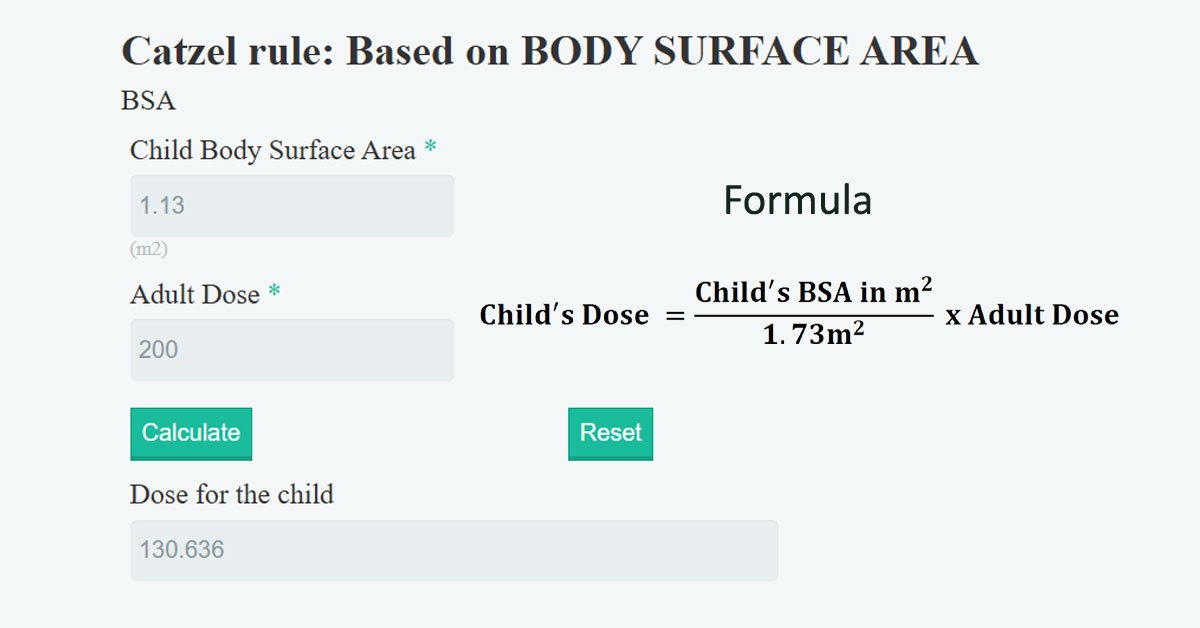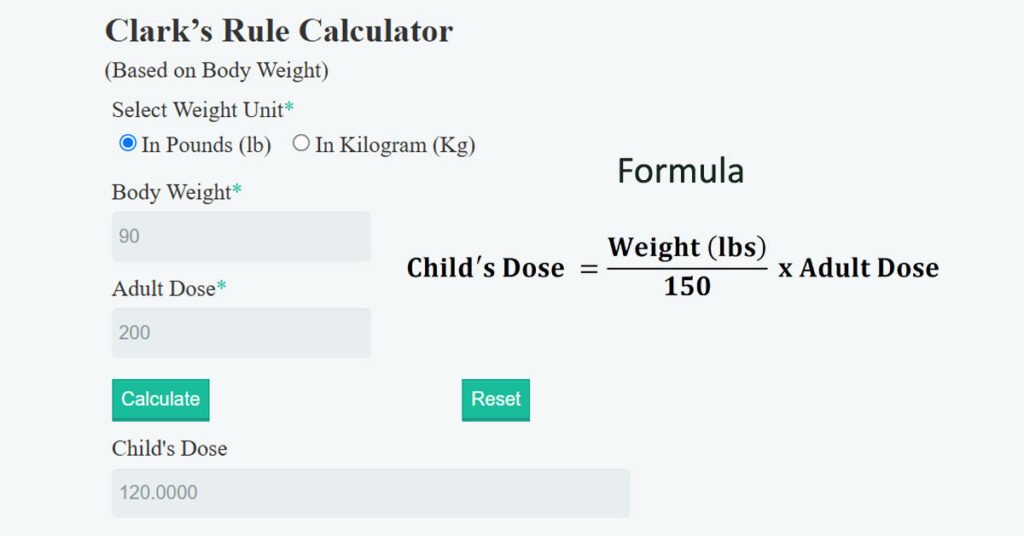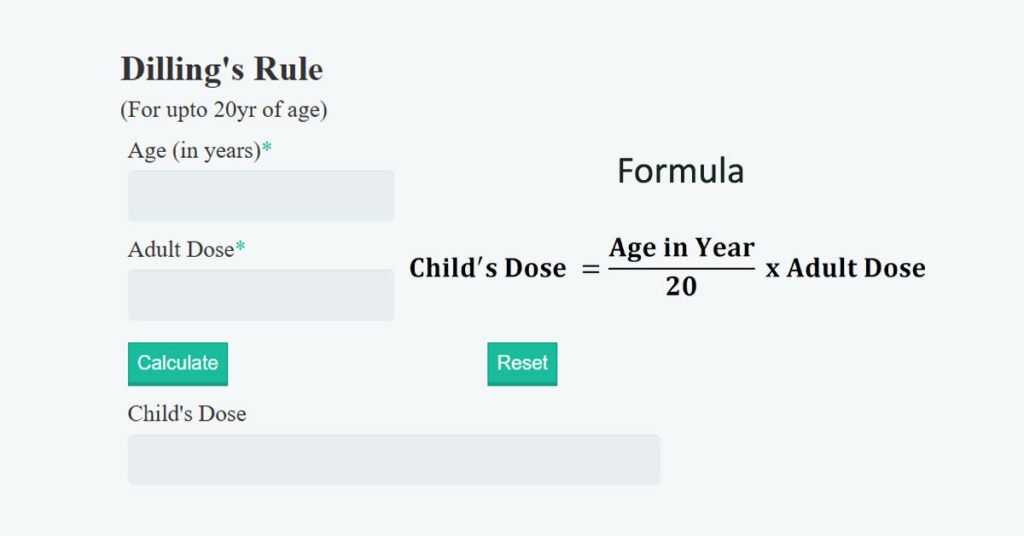BSA Based Dose Calculator Pediatric, Catzel Rule Formula
This BSA based pediatric drug dose calculator allows you to calculate pediatric drug dose using Catzel Rule Formula. Easy drug dose calculator!
Catzels Rule
Catzel Rule is utilized to determine the correct pediatric medication dosage based specifically on the patient’s size. The patient’s size is identified as body surface area (BSA) in meters squared (M2). The average adult client (weighing 150 – 154 lbs) will have a BSA of 1.73M2.
Mosteller formula is used to calculate pediatric BSA in Catzel Formula.
Click here for body surface area (BSA) Calculator.
Catzel Rule Formula
Catzel Rule Formula can be characterized as the body surface area (BSA) of the child in (m²) divided by the average standard Adult BSA of (1.73m²) multiplied by the adult drug dose equals to the pediatric drug dose. Its formula as expressed beneath:
With above BSA dose calculator tool you can calculate pediatric drug dose easily
Calculation Examples 1
Learn how to use catzel rule: Pediatric drug dose calculation when BSA is given.
Example 1: If the adult dose of a drug is 100 mg, calculate the approximate dose for a child with a BSA of 0.83 m2 ?
Answer
Child dose = ?
= 0.83𝑚2/1.73𝑚2 𝑥 100𝑚𝑔
= 47.97𝑚𝑔 𝑜𝑟 48𝑚g of drug
In next example we will solve the problem where patient height and weight is given, to calculate childs dose we will find BSA first.
We will use Mosteller BSA formula to calculate childs BSA. Formula expressed as:
BSA = √((Height (inches) × Weight (lbs)) / 3131)
The above formula is just one method for determining BSA. Results with other formulas will vary.
Calculation Examples 2
Learn how to use catzel formula: Pediatric drug dose calculation example where you need to find BSA first.
Example 2: If the adult dose of a drug is 75 mg, what would be the dose for a child weighing 40 lb. and measuring 32 inch in height using the BSA nomogram?
Answer:
First calculate BSA of child based on given weight and height;
BSA of children =√Weight (lb) × height (in)/3131
=√40lb×32inche/3131
=√1280/3131=√0.4=0.6m2
BSA of children = 0.6m2
Now, Use Catzel Formula to pediatric dose.
Child dose = ?
=0.6m2/ 1.73m² × 75mg=0.35×75mg
=26mg of medicine
General Tips
- Check that your answer makes sense clinically.
- Triple check your work.
- Have a colleague or pharmacist check your work.
- Know general therapeutic drug doses for commonly administered medications.
FAQs
What is Catzel Rule?
Use the Catzel Rule to determine the correct pediatric medication dosage based on the patient’s size. Identify the patient’s size as body surface area (BSA) in meters squared (M²). An average adult client (weighing 150 – 154 lbs) has a BSA of 1.73 M².
What is Catzel Formula equation?
Catzel Rule Formula is:
Child’s body surface area (BSA) in m² divided by the average standard adult BSA of 1.73 m², multiplied by the adult drug dose, equals the pediatric drug dose. Express the formula as follows:
Check our resources if you are interested in different measurements related to Child’s Drug Dose:
- Use the Clarks rule for the Weight-Based pediatric drug dose calculator.
- Dillings Rule Formula and Calculations
- Youngs Rule Formula and Calculations
- Frieds Rule Formula and Calculations


